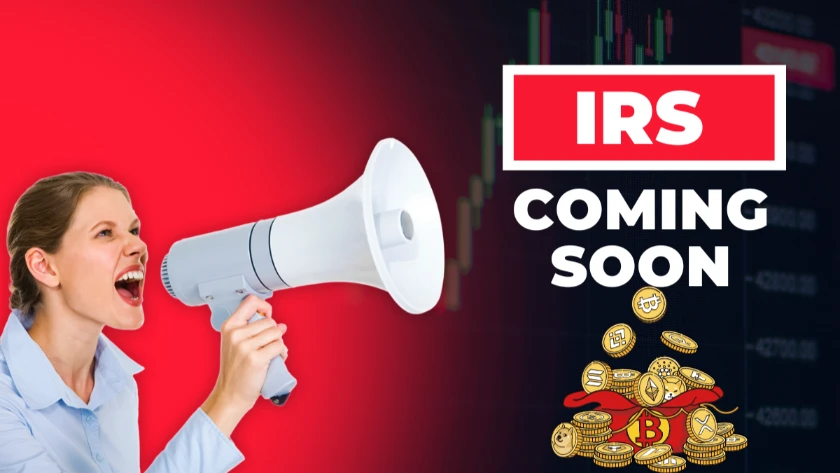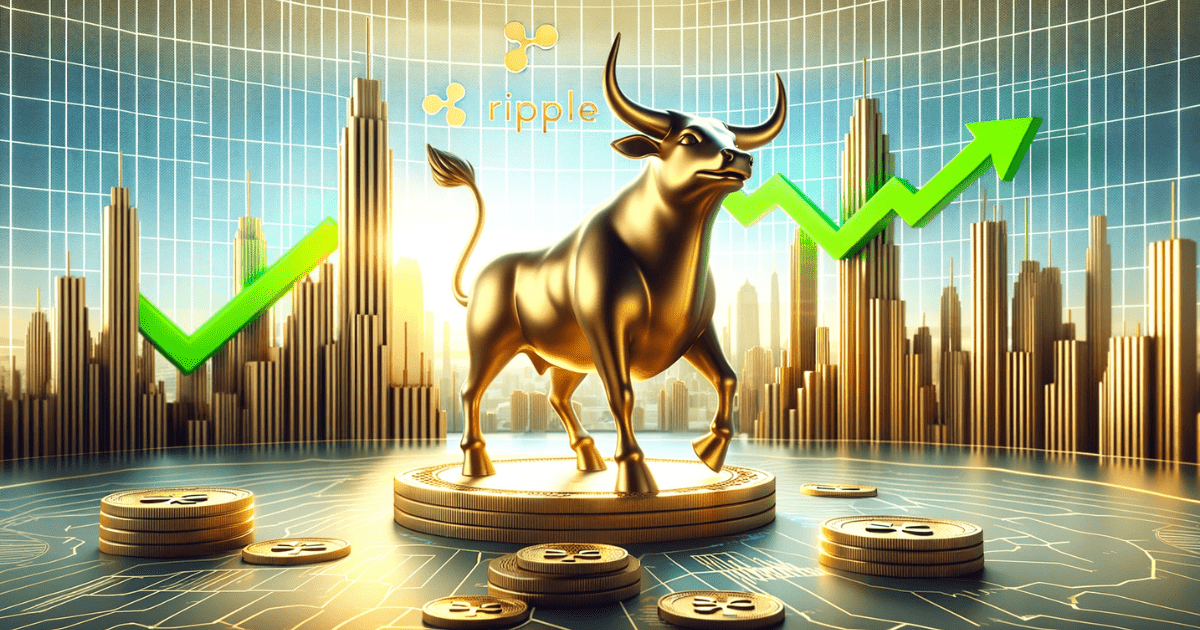XRP Price Prediction 2030: Decoding Ripple’s Future in the Crypto Market

XRP, a name that resonates well beyond the confines of the cryptocurrency community, continues to be a focal point of discussion and speculation. As a native token of Ripple, XRP has carved out its niche in the digital currency landscape, known for its swift transaction capabilities and its ambitious aim to revolutionize cross-border payments.
Despite facing its fair share of regulatory headwinds, notably the ongoing legal tussle with the SEC, XRP has managed to maintain a loyal following and significant market presence.
As we delve into the latest price predictions for XRP, it’s essential to consider the myriad of factors influencing its trajectory – from legal developments and technological advancements to the ever-shifting tides of investor sentiment and market trends.
In this article, we’ll dive into the nuanced world of XRP, exploring its price predictions and unraveling the factors that could shape its journey in the ever-evolving landscape of cryptocurrency.
Table of Contents
Price History of XRP
XRP, the brainchild of Ripple Labs created in 2012, has experienced a dynamic and eventful price history. Initially known as OpenCoin, Ripple rebranded in 2013, the same year XRP debuted at a modest $0.005, according to CoinMarketCap. The early days saw a surge in November 2013, pushing the price to $0.05, but this was followed by a prolonged slump, with XRP trading mostly below $0.01 until a significant rally in Q2 2017 took it to $0.3532.
The real pinnacle of XRP’s journey came on January 4, 2018, when it reached an ATH of $3.84, followed by a steep descent into the crypto bear market, bottoming out at $0.1432. The landscape for XRP was further complicated in December 2020 when the SEC filed a lawsuit against Ripple, alleging the sale of unregistered securities.
This legal battle cast a shadow over XRP’s performance during the 2021 bull market, capping its peak at $1.96, far from a new ATH. However, a significant turnaround occurred in September 2022, breaking a bearish trendline and setting XRP on an upward trajectory marked by higher lows and higher highs. This positive shift was further fueled in July 2023, when a US judge ruled in favor of Ripple Labs, leading to a 73% gain in XRP’s value in a single day.
The momentum continued with the SEC dropping charges against two Ripple executives in October 2023, resulting in a 45% increase over three weeks. Despite these gains, XRP’s current price of $0.56 remains close to 90% below its ATH, reflecting the coin’s volatile journey and the impact of external factors such as regulatory challenges.

At the time of writing, the price of XRP was hovering around the $0.5 mark. The price seemed consolidated for a couple of months now, moving within a range of $0.65 and $0.5 with a few fakeouts.
See related crypto forecasts for: AVAX | SHIB | Kusama | Sushi
XRP Price Prediction 2024: Short-Term Outlook
The XRP price predictions for 2024 are heavily influenced by the ongoing legal battle between Ripple and the SEC, a saga that has become a pivotal factor in shaping the cryptocurrency’s future. As Ripple gears up for a critical trial set for April 2024, the outcome of this case is eagerly anticipated by investors worldwide.
The legal tussle saw a significant moment on July 13th, 2023, when a judge ruled in favor of Ripple, leading to a 73% surge in XRP’s value. However, the SEC’s granted right for a mid-trial appeal in August adds a layer of uncertainty to the proceedings. The resolution of this lawsuit is not just a U.S. market affair; its ripple effects (pun intended) are expected to influence global investor sentiment and potentially reshape regulatory frameworks internationally.
The prevailing optimism suggests a favorable outcome for Ripple, which could catapult XRP into a unique position as the only cryptocurrency to have judicially affirmed its status as a non-security, potentially triggering a bullish market response.
On the flip side, an SEC victory could see XRP’s price struggling, with Ripple potentially facing hefty fines. Yet, the resilience of XRP’s open-source blockchain, capable of running independently through validating nodes, offers a glimmer of hope for its operational continuity. Adding to this complex forecast is the anticipated crypto bull run post the 2024 Bitcoin Halving, which could further propel XRP’s price, especially if Ripple emerges victorious.
Our prediction, balancing these multifaceted scenarios, places XRP at a potential high of $1.80 by the end of 2024. However, depending on the lawsuit’s outcome and overall market trends, we could see it soar to as high as $3.10.
XRP Price Prediction 2025: Mid-Term Market Projections
The future valuation of XRP in the next bull run is a topic of much debate within the XRP community, with its token distribution emerging as a key factor that could potentially curb its price growth.
As of writing, only 54.21% of XRP’s maximum supply of 100 billion tokens is in circulation, with the rest locked in smart contracts, releasing 1 billion tokens monthly.
This release schedule implies that all tokens could enter the market within the next 48 months. Ripple’s strategy of selling these tokens via over-the-counter (OTC) trades aims to minimize market impact, yet it raises concerns about potential future selling pressure.
Additionally, centralization issues loom over XRP’s distribution, with 20% of tokens initially allocated to Ripple’s founders and the top 100 holders controlling a significant 33% of the circulating supply.
Despite these challenges, XRP’s clear use case, established partnerships with banks, governments, and companies, and its potential victory against the SEC, position it for a possible run in 2025.
However, the ongoing distribution of 1 billion tokens each month may prevent it from reaching the lofty valuations some predict. Our XRP price prediction for the end of 2025 is set at around $3, possibly reaching highs of $4.50, reflecting both its potential and the constraints posed by its distribution model.
XRP Price Prediction 2030: Long-Term Financial Forecast
Despite regulatory challenges and concerns about centralization, XRP stands out as a formidable player in the altcoin market, primarily due to its compelling use case in international payments.
XRP revolutionizes cross-border transactions by offering near-instant settlements within 2-5 seconds and at negligible fees, a stark contrast to traditional methods that could take up to three to five days and cost around $20.
Ripple’s partnerships with major financial institutions like Santander and over 200 others underscore the strength and viability of XRP’s application, highlighting its significant long-term potential in the global financial landscape.
Looking ahead to 2030, XRP’s role could become increasingly pivotal with the advent of central bank digital currencies. As nations explore and adopt their own digital currencies, XRP is uniquely positioned to serve as a global “bridge currency,” efficiently facilitating exchanges between various CBDCs.
This potential role amplifies the likelihood of a surge in XRP’s value by the end of the decade. However, it’s crucial to acknowledge the inherent risks and volatility in the crypto market.
XRP’s relative centralization, particularly its ties to Ripple Labs, means that any adverse outcomes from the SEC lawsuit could significantly impact the blockchain’s success.
Considering these factors, our prediction for XRP by 2030 is an average price of $6, with the possibility of reaching highs around $9, reflecting both its promising prospects and the uncertainties tied to its centralization.
Exploring Ripple’s XRP: Beyond the Basics
XRP is a digital currency that stands out in the crowded field of altcoins due to its unique features and specific use case. Developed by Ripple Labs in 2012, XRP is primarily designed to facilitate swift, low-cost international money transfers, distinguishing itself from other cryptocurrencies in several key ways:
Focus on International Payments: XRP’s main use case is to enable fast, efficient, and cost-effective cross-border transactions. It’s tailored to be a bridge currency in international payments, allowing for the exchange of different currencies with minimal fees and near-instant settlement times of 2-5 seconds. This starkly contrasts traditional banking systems, where such transactions can be costly and take several days.
Ripple Network: Unlike many cryptocurrencies aiming to circumvent traditional banking systems, XRP works with them. Ripple, the company behind XRP, has partnered with over 200 financial institutions, including banks and payment providers, to improve the efficiency of global money transfers.
Unique Consensus Protocol: XRP doesn’t rely on the typical Proof of Work (PoW) or Proof of Stake (PoS) consensus mechanisms many other cryptocurrencies use. Instead, it uses a unique consensus protocol requiring validators to agree on the order and outcome of XRP transactions, significantly reducing transaction times and energy consumption.
Limited Risk of Inflation: XRP’s total supply is capped at 100 billion tokens, all of which were created at its inception. Ripple periodically releases portions of this supply from an escrow account, mitigating the risk of inflation with cryptocurrencies where new tokens are continuously mined.
Centralization Concerns: A notable difference, and often a point of criticism, is the level of centralization in XRP. Ripple Labs hold a significant portion of XRP tokens, and the network’s validators are more centralized than decentralized blockchains like Bitcoin. This centralization raises concerns about the influence Ripple Labs could have over the network.
Regulatory Scrutiny: XRP has been under intense regulatory scrutiny, particularly from the U.S. Securities and Exchange Commission. It has impacted its market performance and distinguished it from many other altcoins that have not faced similar legal challenges.
Bottom Line
As we look towards 2030, XRP presents a compelling yet complex picture in the crypto market. Its unique position as a bridge for international payments, backed by Ripple’s strategic partnerships, sets the stage for potential growth and wider adoption.
However, the journey is fraught with challenges, including regulatory hurdles and concerns about centralization. Balancing these factors, our XRP price prediction for 2030 cautiously optimizes an average price of $6, with the potential to climb higher or dip lower based on how Ripple navigates the evolving landscape of digital finance.
Ultimately, XRP’s trajectory will be a testament to the balance between innovation, regulatory compliance, and market dynamics in the ever-evolving world of cryptocurrency.




